#fafhrd
Explore tagged Tumblr posts
Text


Sword Of Sorcery #02 (1973)
Art by Howard Chaykin And Bernie Wrightson
#Comics#DC Comics#Swords Of Sorcery#Swords And Sorcery#Howard Chaykin#Bernie Wrightson#Vintage#Art#Original Art#Before And After#Fantasy#Fantasy Comics#Fafhrd And The Grey Mouser#Fafhrd#Grey Mouser#Skulls#1973#1970s#70s
33 notes
·
View notes
Text


Mike Mignola's model sheets for Fritz Leiber's Fafhrd and the Grey Mouser.
43 notes
·
View notes
Text
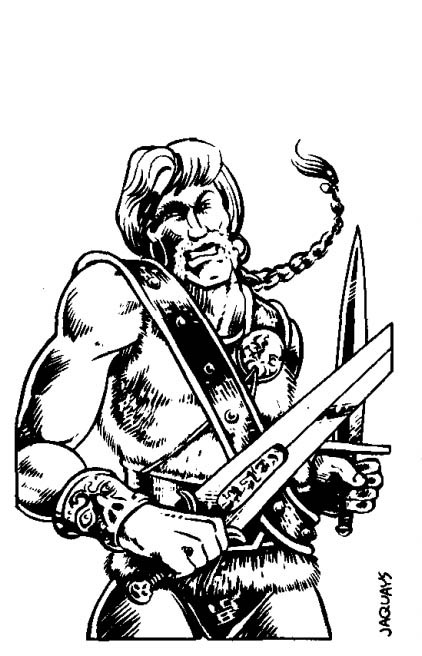
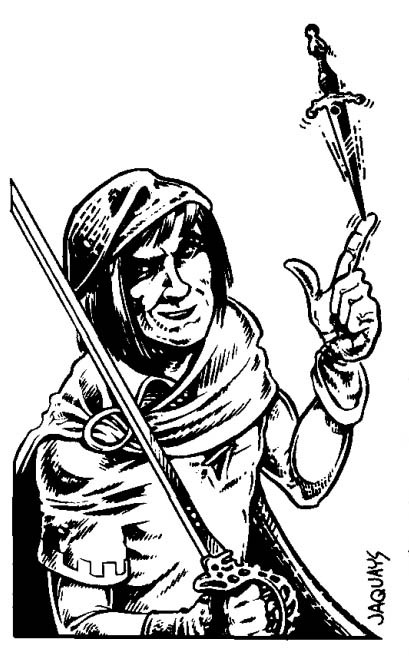
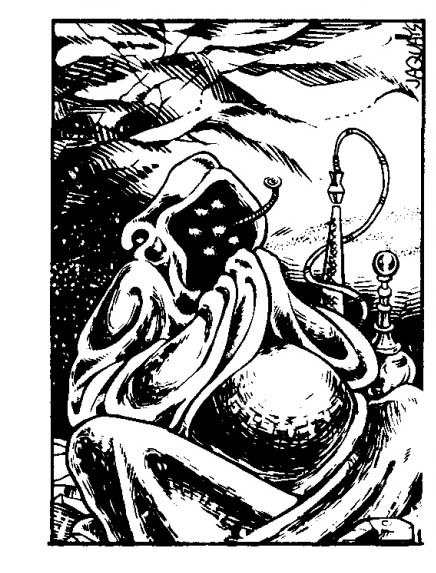
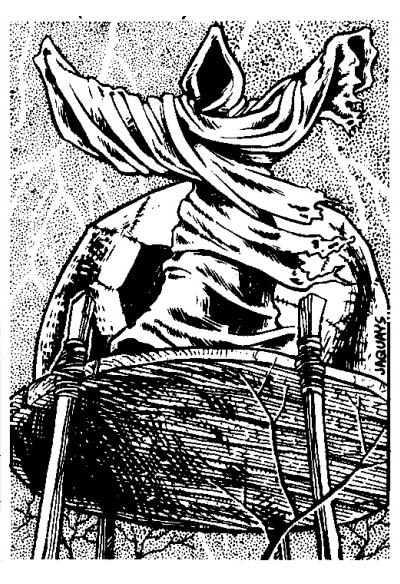
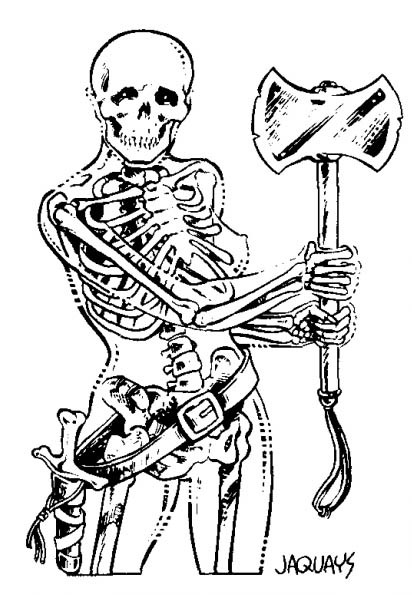
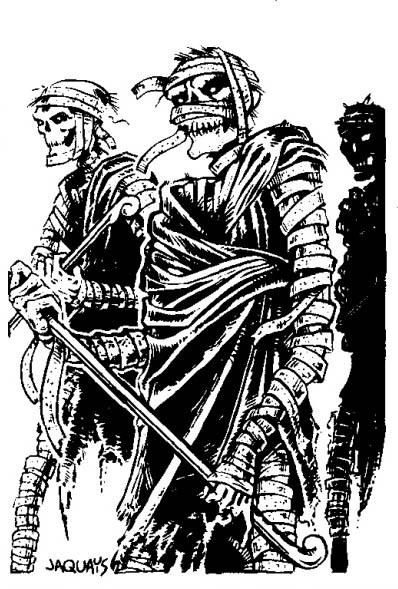
Jannell Jaquays, portraits for TSR's Lankhmar: City of Adventure
#monochrome#Jannell Jaquays#Lankhmar: City of Adventure#Lankhmar#Nehwon#Fafhrd#Grey Mouser#Ningauble of the Seven Eyes#Sheelbar of the Eyeless Face#Kreeshkra#ghoul#Gods of Lankhmar
9 notes
·
View notes
Text

Cover illustration by Wayne Barlowe
#wayne barlowe#the saga of fafhrd and the gray mouser#fritz leiber#swords against death#fafhrd#the gray mouser#fantasy#paperback#paperbacks#cover art#illustration#illustrations#book#books#book cover#book covers#1970s#70s#swords and sorcery#barbarian#thief
8 notes
·
View notes
Text


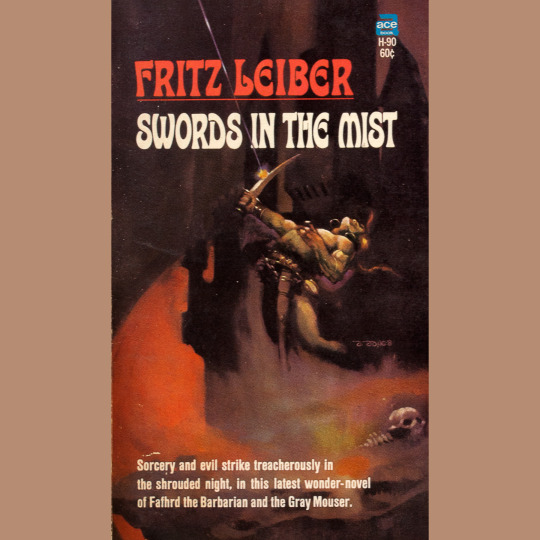


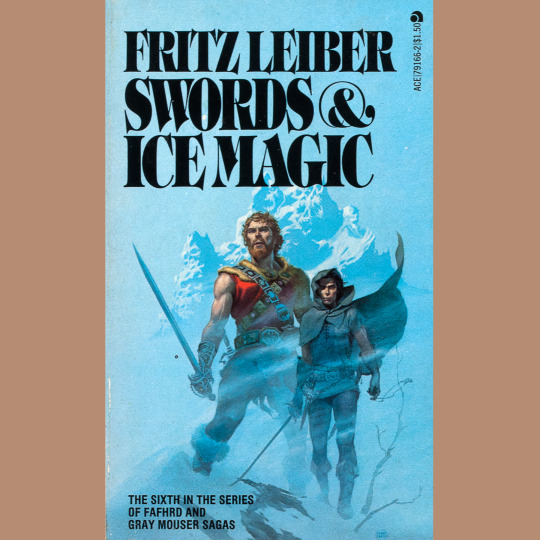
Man, these books. These are the original Ace paperback editions of Fritz Leiber’s Fafhrd and the Gray Mouser stories (1970 to 1977), all but the last, because I just can’t stand the cover of that one. Jeffery Catherine Jones delivers atmospheric covers for the first five, then Michael Whelan is on the last on Swords and Ice Magic, putting up what was apparently the first book-accurate color portrait of the pair. All together, they have a gorgeous, mysterious look. I love them.
I’ve been slowly re-reading them. I thought I had read all of them but either my memory has gotten way faultier than I thought or I skipped around, because a lot of these feel fresh. Even old favorites, like “Ill-Met in Lankhmar” and “Bazaar of the Bizarre,” seemed far less dusty than I expected.
The more years that go by and the more I think about D&D and Appendix N and these stories, the more I kind of think Gygax’s reading list was a smoke screen put up to make it seem like D&D came out of a bunch of different sources. That is demonstrably true — I can see a little Moorcock, a little Zelazny and so on in the tapestry, sure. But Fafhrd and the Gray Mouser are increasingly, to my eye, D&D before D&D. Its a couple key things, really. First, they are twain, and up to that point, and long after, honestly, most fantasy protagonists were lone wolves of one sort or another. These two blokes aren’t a party, but they are close. They banter. They grouse. Second, their fortunes rise and fall like the tide, and when the tide is low, they seek adventure, for how else will they pay their tavern tabs? This is at least two decades of the D&D experience in a nutshell.
They’re nearly all good (never read Adept’s Gambit though - trash). I tend to like the shorter adventures of the first three books best, but there are charms in the longer stories, particularly as they grow older and, mostly, none the wiser.
#RPG#TTRPG#TabletopRPG#roleplayinggame#Novel#Fritz Leiber#Fafhrd#Gray Mouser#Jeffery Catherine Jones#Michael Whelan#D&D#Dungeons & Dragons
258 notes
·
View notes
Text
⚠️Vote for whomever YOU DO NOT KNOW⚠️‼️


#ultimate obscure blorbo#polls#Round I#Fafafa#Grande Sertão: Veredas#The Devil To Pay In The Backlands#Fafhrd#Lankhmar book series#Lankhmar
2 notes
·
View notes
Text
Unlike men, rubies and emeralds do not rest quietly in their graves.
- Fritz Leiber ‘The Jewels in the Forest’
5 notes
·
View notes
Text
Cold winter: Fafhrd and the Gray Mouser
FAFHRD AND THE GRAY MOUSER
Category: Fantasy literature
In the world of Newhon, there is a duo of warriors known as Fafhrd and the Gray Mouser. Between best friends and brothers of adoption (but not lovers, even though they did ponder about it), when they aren’t together or try to split apart fate itself makes it so that they will find each other back and be forced to fight alongside.
They are mercenaries who don’t mind much who hires them – as long as they pay well. This is one of their main concerns: get rich. After all, to drink, feast and gamble, you need money right? And when they aren’t hired, they usually find riches through other activities, be it adventuring in search of long-lost treasures or stealing from the wealthy elites (or stinking rich criminals) of the city of Lankhmar (a city the duo keeps returning to times and times again). But every time the duo gets rich, their fortune ends up disappearing one way or another, leading them to constantly seek their fortune. Something quite similar happens with their numerous conquests: the two collected an impressive amount of lovers and girlfriends, of all kinds and social classes, even having adventures with inhuman entities such as ghouls or goddesses, but every time they end up losing them in one way or another. The life of the duo is a constantly cycle of victory and loses, a wheel forcing them in constant battles and adventures in a world of decadence and ruthlessness.
The duo is considered to have popularized the concept of “the brain and the brawn” in fiction. Indeed, Fafhrd is a barbarian from the savage lands of the north – nearly seven feet tall, with long red hair, a great talent at swordsmanship and impressive muscles. The Mouser, in turn, is a five feet thief and trickster known for his sharp tongue, which often hurts his enemies more than his weapons, and a former wizard’s apprentice who still retains some knowledge of spellcasting. But to believe one is just a bunch of muscles and the other the brain of the duo is a huge misunderstanding of the characters. Fafhrd is just as intelligent as the Mouser, even though he doesn’t like to show it – it is always better for your enemy to underestimate you. He just happens to be much more single-minded and practical. Harboring much more “romantic” ideals as opposed to the Mouser’s cynicism, Fafhrd also has numerous skills the Mouser lacks: he is a skilled rider, a skilled archer, a skilled sailor, and was trained in his youth as a skald, resulting in him having a beautiful singing voice. Meanwhile the Mouser might be openly intelligent and hailing from the “civilized” lands of the south, but his arrogance, bravado and mercurial temper often leads him into foolish decisions and engages him into the more difficult and dangerous battles – unlike Fafhrd who usually avoids to fight more than one enemy at a time and likes to prepare tactics before battles.
Each of them has a duo of iconic weapons. Fafhrd has a sword named Graywand, and a poniard named Heartseeker, while the Gray Mouser has a rapier named Scalpel and a dagger named Cat’s Claw. They aren’t the only weapons they use (Fafhrd also uses a bow or a battle-axe, where the Mouser also uses a sling), but they are their iconic ones – but funnily, while they always have their Graywand and Cat’s Claw, they never are the same. For you see, the pair keeps losing their weapons throughout their various adventures, and while they replace them, they never change the name. All of Fafhrd’s poniards will be Heartseeker, while all of the Mouser’s swords and sabers will be Scalpel.
A last defining trait of the duo would be their “wizard mentors” or “warlock patrons”. Each of the two has a deep connection with a sorcerer: Fafhrd’s is called Ningauble of the Seven Eyes, while the Mouser’s is Sheelba of the Eyeless Face. These two serve as advisors and helpers to the duo, but also hires them for various errands and missions – and most notably, uses them as pawns (or champions depending on how you look) in a great “game” the two wizards seems to have kept going for a very long time now. Who are they? A true mystery… Sometimes they just look like eccentric wizards who happen to have quite weird appearances (their names are reflection of their appearances), while other times it is implied that they are alien beings coming from another dimension… But one thing is certain: they were badly paired with our titular heroes. Sheelba of the Eyeless Face is a serious, taciturn and stern ambiguously-gendered entity, much to the annoyance of Mouser who is a great lover of good puns and story-telling ; meanwhile Fafhrd, ever so stoic, upfront and to-the-point, ends up with Ningauble of the Seven Eyes as a patron, the “Gossiper of the Gods”, extremely fond of riddles, digressions and convoluted explanations. Quite an irony… But it is something people can easily forget: “Fafhrd and the Grey Mouser” is entirely ironic, from beginning to end.
- - - - -
“Fafhrd and the Grey Mouser” is a series of short stories and novellas written by Fritz Leiber between the 70s and the 80s, and they are considered to be the fundamental work of the sub-genre known as “sword and sorcery” (a term that Fritz Leiber himself coined). This series was a big inspiration for many important names in fantasy : it was one of the sources of D&D, and Discworld started out parodying it among many other fantasy works.
But there is something people tend to forget… “Fafhrd and the Grey Mouser” never started as a serious work. When Leiber started writing these stories, he actually intended them to be a tongue-in-cheek pastiche of the fantasy novels of the time – more precisely, he wanted it to be a light-hearted semi-parody of the “Conan the Barbarian”-styled fantasy. This was the whole nature of the work – but as time went by, Leiber’s story grew up to become their own set of picaresque fantasy adventures, and in turn they had such a huge success and such an influence on the fantasy genre that from a “parody” they became a “classic”, to the point some people even end up overlooking the original humor of the stories, which are filled with puns, jokes and jabs at typical fantasy tropes of the time.
In a similar way to how despite subverting this very concept, many people tend to believe that Fafhrd and the Gray Mouser were the original “brain and brawn” duo.
8 notes
·
View notes
Text
Screw it, I'm counting 'em as Pulp Heroes.
BTW, I read this like, a month ago.


Fafhrd and the Gray Mouser, by Mike Mignola.
179 notes
·
View notes
Text

A box of some of my vintage sci-fi and fantasy collection
#my stuff#fritz leiber#michael moorcock#jrr tolkien#hp lovecraft#alfred bester#daw books#Karl Edward Wagner#elric of melnibone#corum#kane#lord of the rings#lotr#the fellowship of the ring#the two towers#the return of the king#stormbringer#fafhrd and gray mouser
294 notes
·
View notes
Text
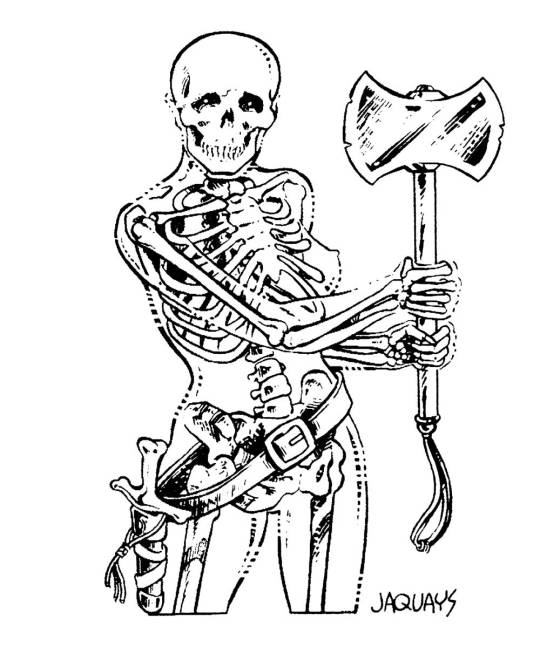
"Nehwon's ghouls are not of the AD&D undead type, but are a species of humanoids unto themselves. They are almost totally transparent, except for their bones, which are grey. They are often mistaken for skeletons, and are almost invisible (80%) in the dark." (Jennell Jaquays, AD&D Deities & Demigods, TSR, 1980)
#D&D#Dungeons & Dragons#Jennell Jaquays#ghoul#AD&D#Nehwon Mythos#dnd#Deities & Demigods#Nehwon#Fritz Leiber#Fafhrd and the Gray Mouser#ghoul of Nehwon#Nehwon ghoul#skeleton#Dungeons and Dragons#TSR
1K notes
·
View notes
Photo

Fafhrd and the Grey Mouser have a small disagreement with some gents in Lankhmar.
69 notes
·
View notes
Note
will someone explain to me what the deal is with asoiaf lore? i'll see someone talking about something and it will come from martin responding to a fan letter from the 90s? and this is canon?? like who found and compilates all of the stuff he has said besides released books and interviews i guess. i've never been a fan of a series like this, is this common?
this has me genuinely in tears sorry 😭😭😭
okay serious now. i genuinely don't know if this is normal or expected in fantasy book series, at least i don't think it's that common in modern fantasy where the fashion has gone other ways from the expansive sword & sorcery type from the 20th century. i could not tell you if other fantasy authors are as involved as grrm is because i haven't been involved with any other fandom like this either (maybe lotr fans can say something different), but considering the years between publications (let this one be the last 🤞), the massive fanbase and fame of the source material, i think it's normal that his interviews, comments, and fanmail has been archived in the internet.
strictly speaking, everything outside asoiaf (books 1-5), fire and blood, and the dunk & egg books is not considered canon. BUT if the info comes from people like elio and linda like twoiaf book, or like the calendars, cookbooks, official art etc it's considered semi-canonical, just like anything grrm says /outside/ of the books. famous example, it's like when jk rowling said dumbledore was gay /after/ the books were done. it's semi canonical bc it comes from the author themselves, it doesn't affect the main body of work so it can be taken or discarded.
the thing is, martin has done A LOT of interviews and answered A LOT of fanmail and worked closely in answering doubts from the westeros dot org site for their rpg games set in westeros (girl, the dream) during the more than 30 years since the publication of agot. all this is considered semi canon and this archive is called "so spake martin" (SSM), which i think was started by elio & linda in the 90s and it's still collecting info. if you go to the awoiaf wiki, esp in the main series characters you'll see this citation (from tyrion's page):

most will be things like "martin has said tyrion has similarities to richard iii" (i mean duh) but other will be really neat like saying tyrion has been trained in arms, which while not something new (he does fight more or less ably during the blackwater battle) it's interesting to point out when it's a detail that may be lost in the series. it goes from character trivia to how casterly rock is different from the show. most fans take what he says seriously but i know there are people that only consider what's in the book and that's it, which is fine. in any case, most of these is used to enrich theories or character analysis, it's why you will see trivia from a fanmail from 1996 or whatever. i myself haven't read SSM completely one by one but i do like to peruse the wiki often, even if it's not complete.
i've seen a few blogs on here who also "collect" grrm's words like nobodysuspectsthebutterfly's "so spake martin" tag (mostly analysis but really interesting read if u don't want to go thru the westeros org page) or georgescitadel that has specific info about characters or themes in asoiaf.
#ask#Anonymous#im currently reading og fantasy like the fafhrd and grey mouser books and all that. not lotr......i could not get into it#so i cannot say if it's different in other fanbases#if anyone has other things to add abt the subject you are most than welcome#hope i answered some of anons doubts
92 notes
·
View notes
Text

Cover illustration by Jeffrey Catherine Jones
#jeffrey catherine jones#jeff jones#jeffrey jones#fritz leiber#fafhrd#mouser#fafhrd and the gray mouser#the gray mouser#swords against death#illustration#illustrations#cover art#book#books#book cover#book covers#paperback#paperbacks#ace books#1970s#70s#sea god#fantasy
5 notes
·
View notes
Text

Page from Fafhrd and the Grey Mouser Book 4. 1991. Art by Mike Mignola and Al Williamson.
#marvel comics#epic comics#dark horse comics#fafhrd and the gray mouser#fritz lieber#howard chaykin#mike mignola#al williamson
27 notes
·
View notes
